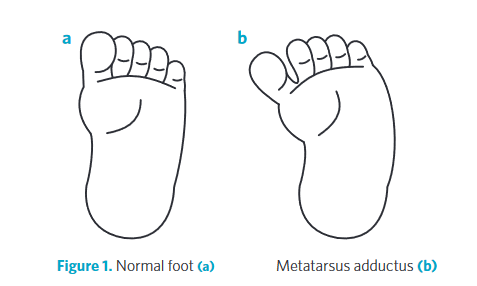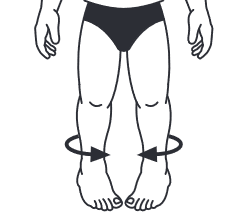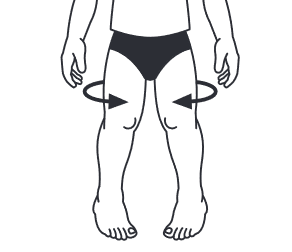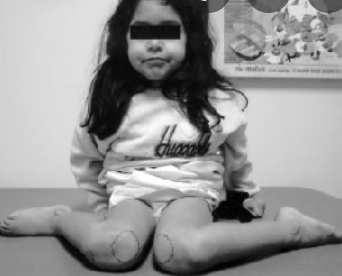
- Common causes:
- infant – the foot curves inwards
- is thought to be related to the position of the baby in the mother’s uterus.
- In most babies the foot is flexible, and improves without treatment by the age of 2-3.
- Gentle exercise may help.
- Some children require shoe inserts or a short period of casting to help straighten their feet.
- toddler – internal tibial torsion

- where the bone of the lower leg turns inwards between the knee and the ankle
- It is very common in infancy and childhood, and usually corrects without treatment by the time the child is about eight years old.
- There are no specific exercises, braces or special shoes that can help
- school-age child – increased femoral anteversion (excessive range of internal rotation and small range of external rotation)
- the thigh bone turns inwards between the hip and the knee.

- This is normal in young children
- When sitting on the floor, children with this condition sometimes sit with their bottom between their heels.
- There is no evidence that this is harmful, but it might be wise to avoid it.
- There are no specific exercises, braces or special shoes that can help correct internal femoral torsion.
- usually corrects without treatment by the time the child is about 10 years old

- Physical examination
- Observe the child’s gait.
- Place in prone and check range for internal and external rotation of the hip, thigh-foot angle and foot posture
- GP management
- Reassure parents that in-toeing in most children will improve as they grow and no treatment is required.
- In-toeing can persist into adult life but rarely does this seem to cause major problems
- Indications for specialist referral
- in-toeing exceeds normal limits for age
- asymmetrical deformity
- tripping in a school-age child that affects participation in activities
- progressive in-toeing
- associated patella pain
- hypertonicity
Related